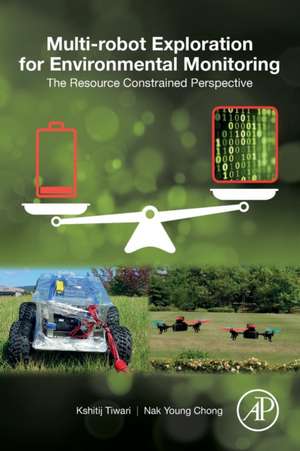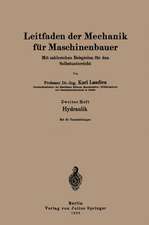Multi-robot Exploration for Environmental Monitoring: The Resource Constrained Perspective
Autor Kshitij Tiwari, Nak Young Chongen Limba Engleză Paperback – 3 dec 2019
Several challenges when deploying such models in real missions are addressed and solved, thus laying stepping stones towards realizing the architecture proposed. This book will be a great resource for graduate students in Computer Science, Computer Engineering, Robotics, Machine Learning and Mechatronics.
- Analyzes the constant conflict between machine learning models and robot resources
- Presents a novel range estimation framework tested on real robots (custom built and commercially available)
Preț: 594.22 lei
Preț vechi: 816.80 lei
-27% Nou
Puncte Express: 891
Preț estimativ în valută:
113.72€ • 117.48$ • 94.64£
113.72€ • 117.48$ • 94.64£
Carte tipărită la comandă
Livrare economică 18 martie-01 aprilie
Preluare comenzi: 021 569.72.76
Specificații
ISBN-13: 9780128176078
ISBN-10: 0128176075
Pagini: 276
Ilustrații: Approx. 100 illustrations
Dimensiuni: 152 x 229 x 15 mm
Greutate: 0.37 kg
Editura: ELSEVIER SCIENCE
ISBN-10: 0128176075
Pagini: 276
Ilustrații: Approx. 100 illustrations
Dimensiuni: 152 x 229 x 15 mm
Greutate: 0.37 kg
Editura: ELSEVIER SCIENCE
Public țintă
[1] Graduate students in Computer Engineering, Robotics, Machine Learning, Mechatronics and Computer Science courses who intend to test their machine learning models on real robot hardware capable of full on-board processing.[2] Ph.D. students, post-doctoral researchers etc., who intend to develop and optimize state-of-the-art machine learning models to guarantee real-time performance on robotic platforms.
[3] Government agencies like EPA and other associated bodies who want to monitor and control pollutants and hazardous materials
Cuprins
Part-I: The Curtain Raiser1. Introduction2. Target Environment3. Utilizing Robots4. Simultaneuous Localization and Mapping (SLAM)
Part-II: The Essentials5. Preliminaries6. Gaussian Process7. Coverage Path Planning8. Informative Path Planning
Part-III: Mission Characterization9. Problem Formulation10. Endurance and Energy Estimation11. Range Estimation
Part-IV: Scaling to Multiple Robots12. Multi-robot Systems13. Fusion
Part-V: Continuous Spatiotemporal Dynamics14. Temporal Evolutions
Part-VI: Epilogue15. Algal Bloom Monitoring16. Cumulus Cloud Monitoring17. Search and Rescue18. Signal strength based localization 19. Conclusion
Part-II: The Essentials5. Preliminaries6. Gaussian Process7. Coverage Path Planning8. Informative Path Planning
Part-III: Mission Characterization9. Problem Formulation10. Endurance and Energy Estimation11. Range Estimation
Part-IV: Scaling to Multiple Robots12. Multi-robot Systems13. Fusion
Part-V: Continuous Spatiotemporal Dynamics14. Temporal Evolutions
Part-VI: Epilogue15. Algal Bloom Monitoring16. Cumulus Cloud Monitoring17. Search and Rescue18. Signal strength based localization 19. Conclusion


























